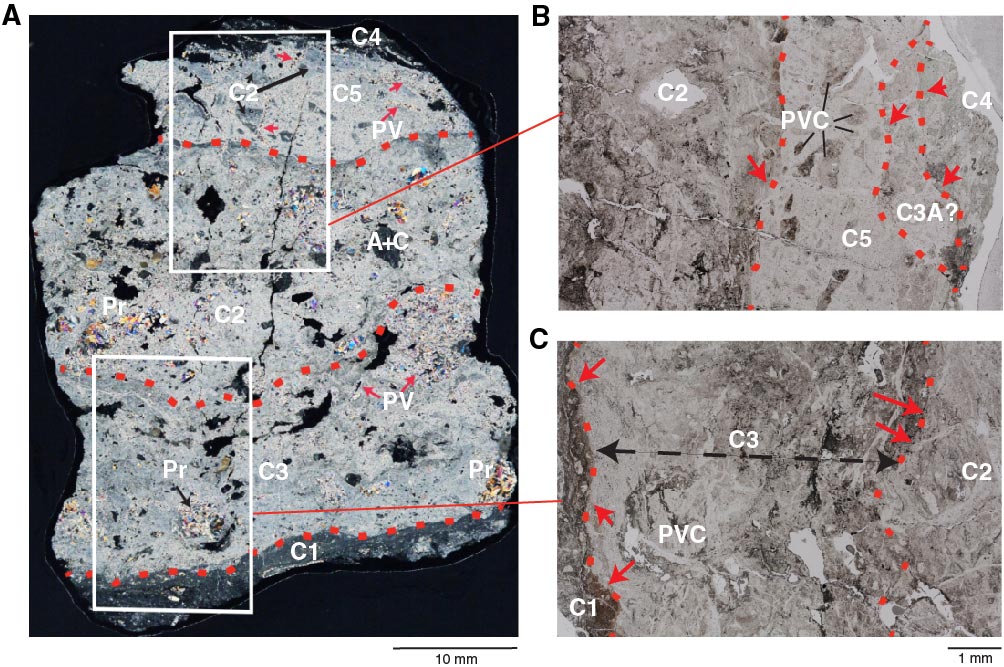
Figure F54. Polydeformed cataclasite (Thin Section 60; Sample 345-U1415J-11R-1, 44–47 cm [Piece 7]). A. Cataclastic zones were tentatively assigned relative ages based on crosscutting relationships, with low numbers (e.g., C1) being older. Fragments and shards of clinopyroxene, corona textures of amphibole and chlorite (A+C), and angular and ovoid clasts of polycrystalline prehnite (Pr) suggest that the protolith was olivine-bearing gabbro cut by relatively coarse grained prehnite veins. These clasts occur in a relatively fine grained matrix of prehnite that is locally vuggy (pv; red arrows). Boundaries of truncating bands of cataclasite (red dashed lines) suggest that as many as five generations of microbreccia occur in this rock (see text). C1–C5 = overprinting generations of cataclasite B. Large clast of a sixth generation of cataclasite (C3A). A prehnite vein clast (PVC) is identified, along with several of the many clasts of prehnite cataclasite with textures similar to band C2. C. Polydeformed cataclasite shown in A. The width of band C3 is identified by the dashed black line. A is under crossed polars; B and C is under plane-polarized light.

Previous | Close | Next | Top of page